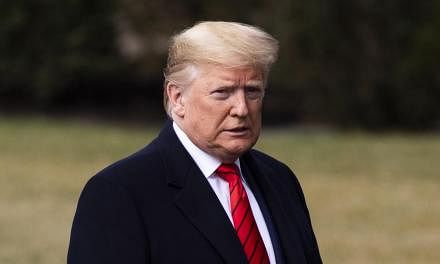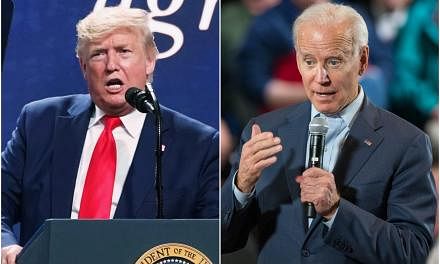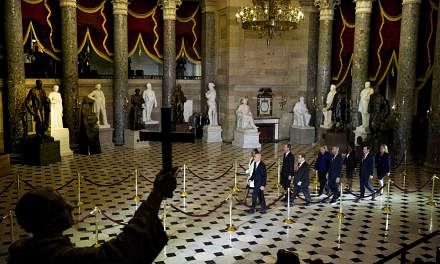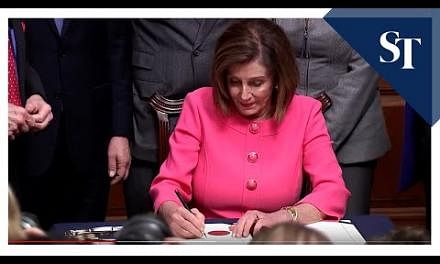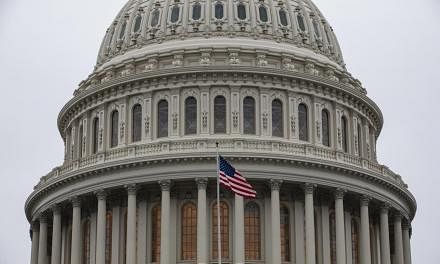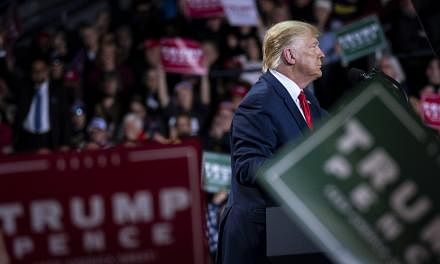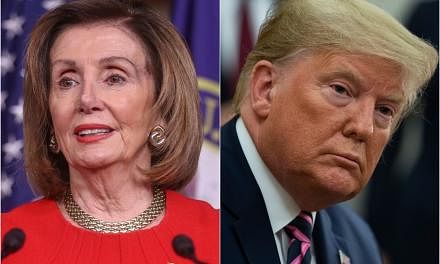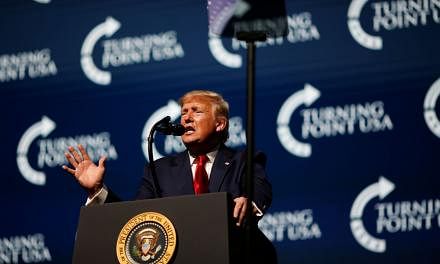WASHINGTON (REUTERS) - When millions of Americans watch the first televised hearing in the impeachment inquiry into US President Donald Trump on Wednesday (Nov 13), they will see a different procedure than is ordinarily used for congressional committee hearings.
The Democratic-run US House of Representatives on Oct 31 approved a resolution laying out the procedures guiding the inquiry, including details on who can ask questions of witnesses and time limits for questioning.
Here are some facts about the process:
QUESTIONING OF WITNESSES
The public hearings are being held by the House Intelligence Committee. The panel's chairman, Democratic Representative Adam Schiff, will run the show. So far Mr Schiff has announced two open hearings for Wednesday and Friday; more may follow.
When Mr Schiff gavels open the first session on Wednesday morning in a large House hearing room, he and the panel's senior Republican, Mr Devin Nunes, are expected to make opening statements and then allow the witnesses, US diplomats William Taylor and George Kent, to do the same.
Then questioning of the witnesses begins. House-approved rules allow Mr Schiff and Mr Nunes to conduct multiple 90-minute rounds of questioning, alternating sides every 45 minutes.
Mr Schiff and Mr Nunes are considered likely to give at least part of their time to committee lawyers who have conducted much of the questioning to date in hearings held behind closed doors.
Once these rounds of questioning are finished, the committee will return to the usual House committee hearing format, with each lawmaker getting five minutes of questioning, alternating between parties.
WHY IS THIS DIFFERENT FROM NORMAL HEARING PROCEDURES?
Starting with 45-minute segments will allow each side to develop a narrative that would be more difficult to build in the usual five-minute format. The five-minute limit can be frustrating when witnesses are argumentative and lawmakers do not have time to follow up.
This happened in a contentious September House Judiciary Committee hearing featuring Mr Corey Lewandowski, who ran Trump's campaign for part of 2016. Mr Lewandowski argued with the panel's chairman, Representative Jerry Nadler, and Republicans and Democrats then argued over whether Mr Nadler had used up his questioning time.
WHAT HAPPENS NEXT?
There may be other public hearings of the Intelligence Committee. Once public hearings are finished, the Intelligence Committee, along with the other two committees that participated in the private hearings, are expected to report on their findings.
This report will be sent to the Judiciary Committee, which is expected to hold its own hearings, while deciding whether to draft articles of impeachment. Mr Trump and/or his attorney would be allowed to participate in the Judiciary Committee hearings.
Any articles of impeachment drafted by the committee would be sent to the full House for a vote, which could happen by the end of the year. Any trial would take place in the Senate, which is controlled by Mr Trump's Republican party.

